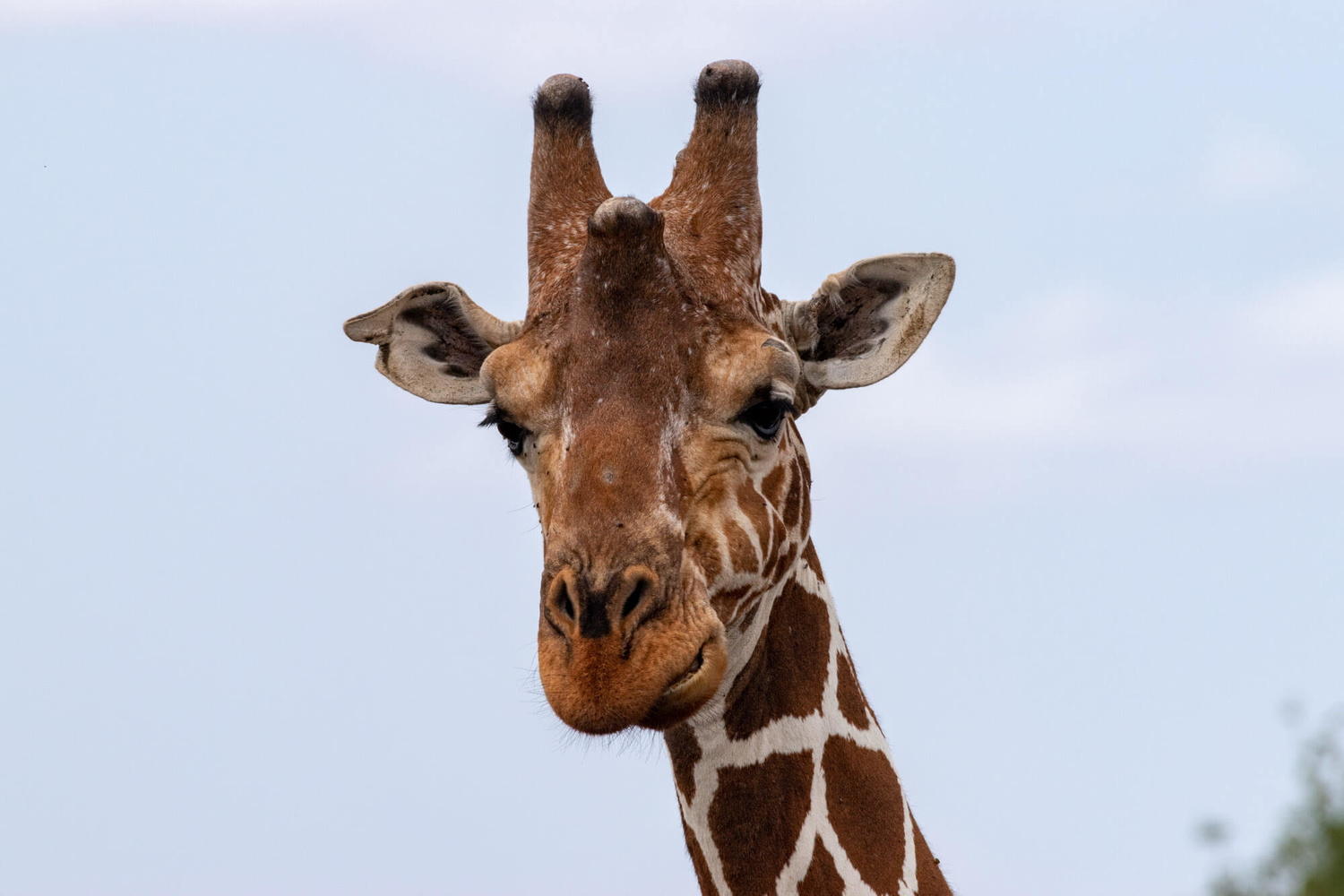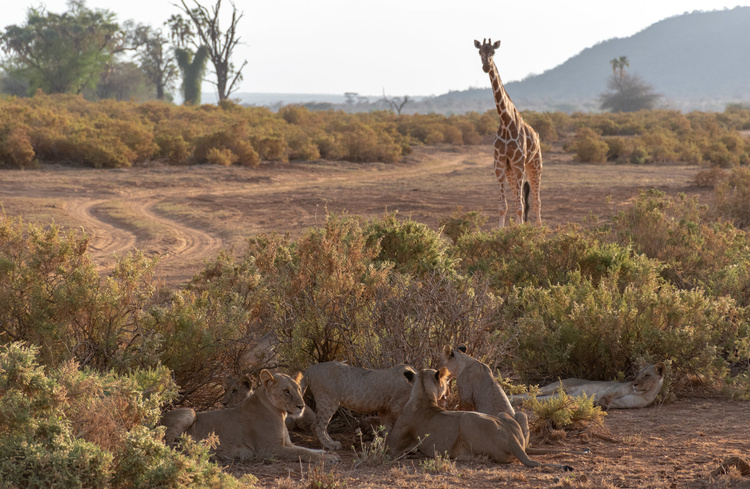Safari Ol Donyo Sabuk, Sagana, Meru, Samburu
From US$3,912 per person
Itinerary
-
Day 1Nairobi - Ol Donyo Sabuk National Park
Depart Nairobi to Ol Donyo Sabuk, check in at the hotel. There after prepare for your departure to Ol Donyo Sabuk Park to start your 3–4 hours hike accompanied by a local guide and a game ranger. It’s a 9km hike to an amazing 360-degree view at the summit. This tiny park of just 20.7 Sq. Km is surrounded by an oasis of dense primeval forest that supports a huge variety of birds and numerous primates, including black and white colobus, and blue monkeys. The community here call Mount Kilimambongo (buffalo mountain) and buffalos are indisputably the dominant animals in this park. Back to the hotel, late lunch, siesta or relax by the swimming pool for the rest of the day. Dinner and overnight at Ol Donyo Sapuk Resort.
-
Day 2Ol Donyo Sabuk - Sagana
Breakfast and for those who love horse ride and even for those with no experience can enjoy a 200m ride before departure to Sagana County. The hotel has energetic and responsive horses, and with knowledgeable and enthusiastic guides, and spectacular scenery, the ride would be a nice start of the day.
The drive to Sagana takes approximate 2 hours, and you arrive in time for lunch at Jangwani Camp Sagana. The tented accommodation units are snuggled on a cliff-side overlooking the triple waterfalls along the famous Sagana River. In the afternoon you can choose an activity of your choice, payable directly, or choose to relax for the rest of the day. A bonfire in the evening as you enjoy drinks, share stories, with the relaxing sounds of the waterfalls on the background will cap the day. -
Day 3Sagana - Jangwani Camp
Action-pack-day and quite exciting, optional activities available and payable directly, including and not limited to:
**Swimming – more exciting, a plunge from the highest waterfall into the water, fully protected and safe.
**Simple Rafting – this is for beginners and done in front of the camp. You will be guided through many different activities/techniques, and you will build up new skills. Additionally, this ride also involves you rafting close to the scenic Jangwani falls and an adventurous swim into a small cave behind their biggest waterfall. You will be fully equipped and ready to face this exhilarating experience.
**Rafting – for those who enjoy a challenge, enjoy rafting down the Sagana river. Depending on the season, you would be able to visit caves, and even plunge from other waterfalls along the way. And much more to enjoy!!
**Fishing – for fishing enthusiasts, the river provides an opportunity to engage in sportfishing with various fish species to look forward to catching. A good catch guarantees a delicious fresh meal at dinner while enjoying the enchanting sight and sounds of the amazing Jangwani falls.
**Kayaking – kayaking down-stream Sagana river is a perfect way to conquer the river. Under the guidance of trained guides, you will experience natural slides with the feeling of excitement, fear, laughter and as a bonus, you will enjoy the sighting of various species that are within the river as you go downstream.
**Nature walk – a 2 hours nice and relaxing walk along the river whereby you will be exposed to various bird species, tree, and insect species, spectacular views and much more.
**Archery – hitting the bull’s eye depends on how much fun you want to have, the more times you miss, the more fun you have trying to nail it. Bow and arrow, aim, focus and shoot!!
**Cycling – mountain biking is a very popular activity generally, and here this is a guided activity through the exotic sites of Sagana. It’s very stimulating, adventurous, and fit way to explore the area however, prior experience of biking is required. Worth to note, biking lessons are unfortunately not available on site.
A bonfire in the evening as you enjoy drinks, share stories, celebrate your new achievements, with the relaxing sounds of the waterfalls on the background will crown your stay at this unique camp. -
Day 4Sagana - Meru National Park
We depart after breakfast and proceed to Meru to arrive in good time for lunch at Ikweta Safari Tented Camp.
Departure to explore Meru Park. The park covers 870 km2 straddling the equator, less than 300 meters above sea level. The game drive takes in the flatter, drier eastern part of the park, occupied by savannah and criss-crossed by lugga, seasonal rivers that are generally bordered by gallery forests where doum and raffia palms grow.
The riverbanks and swamps attract many animals, including white rhinoceros in the sanctuary area, which is closely monitored by rangers. -
Day 5Meru NP - Shaba National Reserve
Breakfast and thereafter depart for morning game drive. Brilliant and beautiful on a magnificent scale, the Meru and Kora sister parks feature luxuriant jungle, coursing rivers, verdant swamp, khaki grasslands and gaunt termite cathedrals all under the sky’s great blue bowl. Little visited and utterly unspoilt, few places are comparable to the remote and rugged atmosphere found here. Sightings include Grevy's zebras, elephants, Bohor reedbucks, hartebeests, pythons, puff adders, cobras, buffalos and more than 427 recorded species of birds.
In the afternoon, depart for the dramatic semi-arid scrub land of the Northern Frontier District. It is an area where the local people have a rich and colourful heritage. Stopover at a Samburu Village or homestead for cultural experience before checking in at Sarova Shaba Lodge for dinner and overnight -
Day 6Samburu and Buffalo Springs National Reserves
Full day spent exploring the Reserves. The highlights of Buffalo Springs and Shaba game reserves is the spectacular scenic beauty, rivers and forests. The reserves have numerous permanent springs and a wealth of wildlife which includes leopard, hippo, elephant, lion, reticulated giraffe, grevy’s zebra, Beisa Oryx, and Blue necked Somali Ostrich that are rare elsewhere in the country, and crocodile found in the Ewaso Nyiro River. Over 400 species of birds have been identified or recorded in this area.
-
Day 7Shaba National Reserve - Nairobi
Breakfast at leisure, check out and with packed lunch drive en route game viewing in Shaba NP, with a stopover to enjoy views of Mount Kenya and Aberdare Ranges, to Nairobi.
Prices
Price conditions for your safari in Kenya
Price Per Person
Price Include
- Transport in private 4x4 land cruiser
- Unlimited kilometers
- Services of our professional English speaking driver guide
- Services of our professional English-speaking driver guide parks entry fees
- Drinking Water (refer below)
- Hotel accommodation on Full Board basis sharing room (refer below)
Not Included in the Price
- Visa fee
- International flight
- Transfers were not applicable
- Travel and cancellation/medical insurance cover
- Hotel accommodation in Nairobi
- Single Room (under single Supplement terms)
- Beverages, Alcohol, Spirits
- Reusable Water Bottle for refilling (Very Important)
- Photographic fee with the local people
- Eventual tips
- Any items or expenses of personal nature
- Any other items not mentioned in the inclusions
Travel info
Here is
some practical information for your safari in Kenya
Accommodation
during your safari in Kenya
- Ol Donyo Sapuk Resort.
Transport in safari
Other
Useful Information to travel in Kenya
- No plastic bags in to Kenya
- No plastic bottles in the Game Parks and Reserves
- Carry your COVID Vaccination Certificate
Entry requirements for Kenya
- Mandatory passport valid 6 months after your return date
- Since January 4, 2024, entry to Kenya has been subjected to an electronic travel authorisation (ETA), in place of a visa.
Sanitary conditions for Kenya
- Yellow fever
- Malaria
- Consult your GP or an International Vaccination Centre to assess your state of health and receive health recommendations, particularly concerning vaccinations
- Set up a personal pharmacy
Climate
What to Pack
- Good quality sandals
- Good quality light walking shoes
- Casual shoes for evenings
- Light boots for your own comfort in the evening
- Lightweight waterproof rain jacket, windbreaker or fleece jacket
- Practical safari jacket
- T-shirts
- Short and long sleeve shirts or blouses
- Shorts and long casual trousers
- Casual light dresses or skirts
- Enough underwear, socks and hankies
- Bathing suit
- Toiletries, lip balm and scarves
- Miniature wet towel and Kleenex (enough)
- Small backpack
- Small reusable water bottle
- Small flashlight or headlamp (important)
- Hat with 'shin cord' to avoid blowing away and a safari hat or cap (important)
- Important Quality mosquito/insect repellent (for body)
- Waterproof sun blocker cream/sunscreen
- Personal medication
- Good quality sunglasses
- Binocular and Guidebooks
- Camera with extra battery and memory card
- Hiking spirit, High Spirit & Energy and Good sense of Humour







